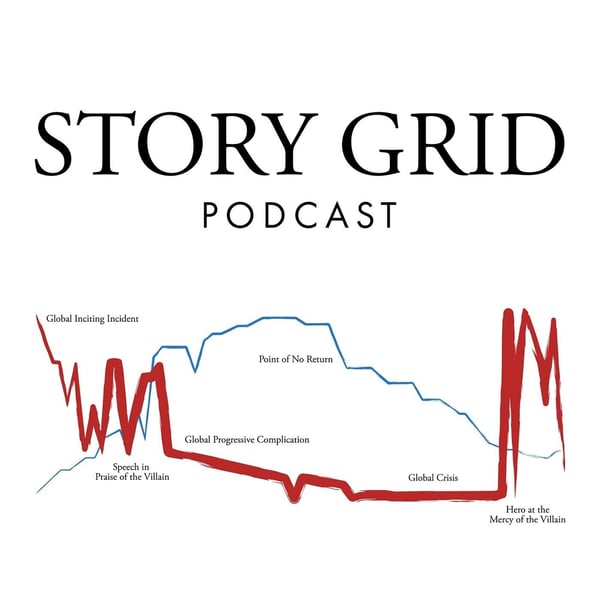Point of View: It's WAY more than 1st, 2nd, and 3rd
Story Grid Writing Podcast
Shawn Coyne
4.8 • 767 Ratings
🗓️ 7 April 2022
⏱️ 66 minutes
🧾️ Download transcript
Summary
Transcript
Click on a timestamp to play from that location
| 0:00.0 | Hello and welcome to the StoryGrid podcast. My name is Tim Graal and I'm your host and I am the guy that does all the behind the scene stuff here at StoryGrid. |
| 0:10.0 | And I'm a writer that's trying to figure out how to tell a story that works. |
| 0:15.0 | And joining me, I have three people joining me. |
| 0:18.0 | Sean Coyne, he's the creator of StoryGrid and the founder of StoryGrid. |
| 0:22.9 | And he wrote the book, The Story Grid. And then we have Danielle Kiyoski. She's the chief |
| 0:27.7 | academic officer at StoryGrid Universe. And we have Leslie Watts, the editor-in-chief at StoryGrid |
| 0:34.8 | publishing. And Leslie is the one that's going to be leading the way this |
| 0:39.3 | week as we dive into point of view. So Leslie, I'm going to let you take it away. |
| 0:45.3 | Okay, great. So I want to start with the big picture. We're going to talk about point of view |
| 0:50.9 | analysis today, but I want to walk us back from where we've |
| 0:56.9 | started to where we are now. So we started with the five genre clover leaves, and from that we |
| 1:06.6 | generated what we now call the pop, and that's the proposition of possibility. |
| 1:12.4 | And that proposition of possibility or pop is what generates and constrains the problem space |
| 1:19.7 | for the story. And the cool thing is that it also generates the spec sheet for the author. |
| 1:27.3 | So that brings us down to narrative device. |
| 1:31.5 | And with narrative device, we take that pop and we generate and constrain what I would |
| 1:38.6 | call the communication space in the narrative device. |
| 1:43.6 | And so within that space, we're looking at communication |
| 1:48.5 | from the author, who is a specific identified role to Sam, our single audience member, |
| 1:59.0 | who's also a very specific person, and Sam has a problem. |
| 2:04.9 | And that problem is reflected from the problem that we identify in the pop. |
| 2:14.1 | So from the narrative device, we get a what I'm calling right now and as if. |
... |
Please login to see the full transcript.
Disclaimer: The podcast and artwork embedded on this page are from Shawn Coyne, and are the property of its owner and not affiliated with or endorsed by Tapesearch.
Generated transcripts are the property of Shawn Coyne and are distributed freely under the Fair Use doctrine. Transcripts generated by Tapesearch are not guaranteed to be accurate.
Copyright © Tapesearch 2025.

